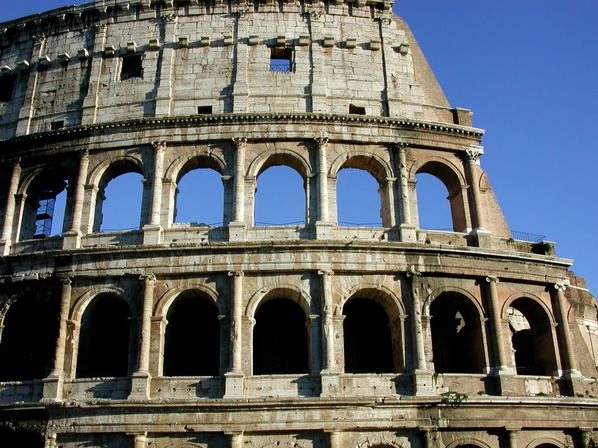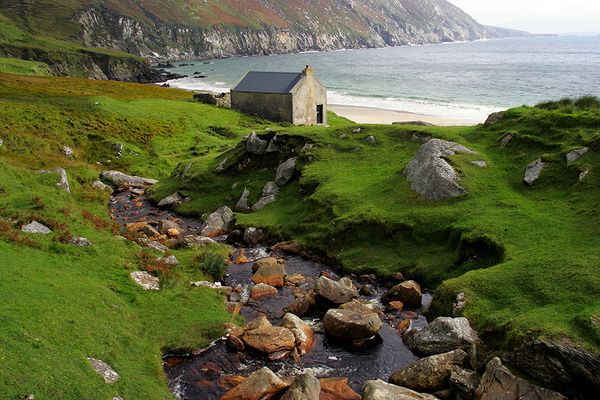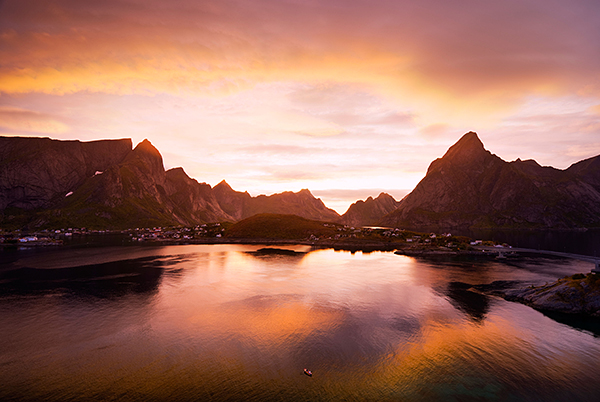The Impression of Europe

A brief history of alcohol in Europe
Alcohol has been produced and drunk in Europe for thousands of years, usually made out of whatever materials were locally available. Fermented alcoholic drinks and (from the thirteenth century) spirits were often also used as a medicine, a practice that continued until the early twentieth century and the advent of modern medicine. Alcoholic drinks were commonly preferred as they were less likely to be damaging to health than (impure) water, and drunkenness was also common, although repeated drunkenness was sometimes condemned. Laws on alcohol did exist, but normally for reasons of public order or to regulate the market rather than for public health. However, this picture changed with a series of developments in mediæval and early modern Europe, including industrialization, improved communications links, and the discovery of stronger, distilled beverages. European elites were faced with a situation of urban squalor that included unprecedented public drunkenness in lower classes – and both they and (in some countries) emerging workers’ movements attributed much of this to alcohol.
Large ‘temperance’ movements, therefore, spread across much of Europe in the nineteenth and early twentieth centuries, driven by concerns over spirits before often moving on to an opposition to all alcoholic drinks. In some cases this led to a complete ban on alcohol in a country or area, although elsewhere less drastic systems of alcohol control were adopted. In most, but not all, countries the temperance movement has since faded, to a position of little significance by the end of the twentieth century. The idea of ‘alcoholism’ as a disease also grew during the nineteenth century, with many European countries developing homes or asylums to treat ‘alcoholics’. Although temporarily out of fashion at the height of the temperance period, the ‘addiction concept’ fitted the ideological climate of the mid-twentieth century and became popular once again. Yet in recent years, the ‘new public health movement’ has become the dominant paradigm for discussing alcohol-related problems, allowing a broader discussion than a focus on a small subset of ‘alcoholics’.
Today’s Europe includes a wide range of uses and meanings of alcohol, ranging from an accompaniment to family meals to a major part of rites of passage. Alcoholic drinks are full of meaning, with drinking behaviour able to communicate the formality of an event or the division between work and leisure. Drunkenness is equally symbolic, with ‘drunken comportment’ – how people act under the influence of alcohol – varying across Europe. Meanings and practices vary within as well as between countries, sometimes linked to the identities of different groups. This can occur through many alcohol-related channels, from the association of a particular drink with regional or national identity, to the meaningful non-use of alcohol in many European Muslim communities.
Best Fall Trips 2015
The end of the bustling summer tourist season kicks off one of the best times of the year to travel. Whether you’re up for adventure, relaxation, or something in between, check out our editors’ list of 10 best fall trips for inspired ideas. —Maryellen Kennedy Duckett
 Enchanted Circle Scenic Drive, Taos, New Mexico
Enchanted Circle Scenic Drive, Taos, New Mexico
Best Spring Trips 2015
Vibrant spring blooms in the northern hemisphere and dazzling autumn displays in the southern make this the perfect season to get outside and walk, hike, or take a scenic drive. Use our editors' list of 10 best spring trip destinations as the launching pad for an active—and colorful—spring getaway. —Maryellen Kennedy Duckett
 Wild Atlantic Way, County Donegal to County Cork, Ireland
Wild Atlantic Way, County Donegal to County Cork, Ireland
Best Summer Trips 2015
From cruising near the top of the world on a Midnight Sun Safari to diving a whole-ship reef near the bottom of the Gulf of Mexico, this year’s list of 10 best summer trips showcases some of the world’s wildest places, biggest festivals, and most awe-inspiring sights. Get inspired and go.—Maryellen Kennedy Duckett

Midnight Sun Safari
Best Winter Trips 2015
There’s no reason to hibernate when new adventures await on every continent. From fat snow biking in the Tetons to rumbling across Aruba by Jeep, our editor’s list of 10 best winter trip destinations—plus a bonus “Reader’s Choice”—includes unexpected ideas for both snowbound and sun-splashed vacations. —Maryellen Kennedy Duckett
 Go on a Reindeer-Drawn Sleigh Ride Safari, Lapland, Finland
Go on a Reindeer-Drawn Sleigh Ride Safari, Lapland, Finland
PhD Studentship Announced In The UK To Create New 3D Printed Design Solutions With Liquid Metal Materials
BY ANDREW WHEELER ON
WED, DECEMBER 17, 2014
· 3D PRINTING, EDUCATION, EUROPE, RESEARCH ADD COMMENT
Eligible students can now apply for a fully funded PhD studentship (3 years) to work as part of the Additive Manufacturing and 3D Printing Research Group (3DPRG). Located within the Faculty of Engineering, the 3DPRG is widely regarded as the world’s leading Centre for Additive Manufacturing research, development and dissemination. Liquid metal jetting 3D printing is a novel technology developed by the 3DPRG in collaboration with Océ-Technologies B.V. By enabling the fabrication of functional components designed to combine the properties of multiple metals, it is envisaged that liquid metal jetting 3D printing will open up a number of exciting opportunities, including: “the fabrication of novel electrical conductive componentry, new generation 3D smart devices and structural multi-functional components.” According the 3DPRG, “Liquid metal jetting 3D printing is of great scientific value because not only does it offer the typical design freedom associated with additive manufacturing, but it also allows for the possibility of engineering objects composed of different metals during the same printing process
Travel to Europe
I think there are many things I can write down for future review, so emerged this travelog that memorized what I had seen and thought during this European trip. Hope you can share some thoughts and feeling as me.
This European trip was an exchange visit of the cooperation program between China and Belgium on the topic of co-generation. During our stay in Europe, we lived in Ghent. As scheduled before, we visited the Ghent University and the University of Antwerp. In our spare time, we spent two days in Paris, one day in Amsterdam and half day in Brussels.
Paris is a big city compared with the other cities in Europe. My colleague and I took the 6:55 train from Ghent to Paris. The original two-hour trip turned out to be a three-hour one due to the malfunction of the train. At first, we did not know what happened, because we could not understand what the announcer said, which was in Flemish and French, we just followed the others to move to other train. When we arrived in Paris North station, it was nearly 10:00, we had our late breakfast and early lunch there, then we went to the Notre-Dame Cathedral. If the breakdown of the train was only a piece of cake, we met our first challenge when we decided to take the metro. Paris metro system is huge and complicated, just like a spider web. What makes it worse is that there is only French but no English. We asked everyone we could find, and thanks to the God, we finally found the right metro line. I was so captivated by the architecture and the beautiful stained glass windows of the Cathedral. Walking along the bank of the Seine, we reached the Louvre Museum and spent the whole afternoon there. The Louvre is a magnificent palace. There are so many collections, antiquities from ancient civilization countries, sculptures, craftworks, paintings, prints and drawings, I bet the collections are more than that of any museum in China. The museum is so large that to me it is something like a labyrinth. We lost our way in it. We just walked around but failed to find the way out, feeling thirsty and tired. There are many visitors, we could hear various kinds of languages, including Chinese and even Shanghai dialects. The first day ended in a small hotel near the North station. Oh, there was an episode I nearly forget to tell you. We had our supper in a nearby restaurant. It was a French one. I could not read the French menu, so I asked the waiter to recommend one for me. Can you guess what I had for that night? Mussels, a big pot of mussels. Though I like mussel, I had never taken it as my main course before. It was really an unforgettable dinner. Lying on the bed of the Nord Hotel, I studied the map of Paris metro lines founding it was not so complicated as I had thought. I was full of confidence to manage it the next day.
Our first destination of the second day in Paris was the world-famous Eiffel Tower. It was chilly early in the morning, but the coldness could not prevent us from climbing the Tower. We came to the second floor and got a panorama of the charming city. At that moment, I had the illusion that I was in my dream, a beautiful dream that I have been longing for a fairly long time. One thing you cannot miss in Paris is walking along the Avenue Des Champs Elysees. We walked all the way to the Arc de Triumph, seeing many people were doing their Christmas shopping. Being familiar with the Paris metro lines, I found the second day was easier than the first day. We could enjoy the city sightseeing and feel the pulse of Paris, once a remote city from my mind, but now we are so close to each other. Everything is new, everything is different to me. I put myself into the crowd and shared the festive atmosphere of the upcoming holiday. The feeling cannot easily be forgotten I am sure.
The weather was not good when we visited Amsterdam. It was raining, which made it even colder. We walked along the road in front of the central station hoping to find the Dam Square. After about 15-minute walk, we reached a square, where I did not think is the Dam Square, for it was not as big as I once thought. We decided to go on, but there was no square ahead. So I asked a gentleman in the street, he told me the square we just passed was the Dam Square. Seeing that I was still suspicious, he smiled and said, of course the Dam Square is small, not so big as the Red Square in Moscow. Hearing that, we both laughed. We went back to the square and saw many pigeons. I played with the pigeons and took some nice pictures. Amsterdam has many canals and bridges, but the city is not big. It only took a few hours to look around the central part of the city. We did not see the symbols of the Netherlands – windmills and tulips due to the tight schedule and the wrong season. Amsterdam is an open city, just as the professor of the Ghent University had told us before we went there. He said there were three places worth visiting, one is the Dam Square, the second is the shopping center and the third is the Red Light area. We would like to see what the red light area looked like, but we had to go before the curtain of the night drew. I took a nice nap on the train back to Ghent. The train was very warm and comfortable. I felt like lying in the cradle with the rhythmic fluctuation of the train.
Brussels was the last destination before we left for China. We spent only half day in Brussels and just visited the Grand Place or the City Hall. It is a city that makes me feel like a home. I do not know how I can get such kind of feeling, but it really is. A friendly woman showed us the way from the station to the city hall and made a brief introduction of the city to us. On the Grand Place, we met some of our compatriots. One man was very interesting, he asked me if I was a Miss Japanese or Miss Chinese. I told him that I was a Miss Shanghai. He then asked us whether we were on a packaged tour. I said, no, we are on a budget traveling by ourselves. He was so surprised and said Miss Shanghai was marvelous. He was so amusing and wanted to take a picture with me. I can tell from his accent that he is from south China’s Guangdong province. There were many big and small shops around the Grand Place. Some of them were especially for the Christmas season I guess. I found a very lovely finger ring there, it is floriated, like a flower. I got a very good impression of Brussels. Think you can get the same feeling too.
Antwerp is the second largest city in Belgium. It is a harbor city like Shanghai. It was a pity that the day we visited Antwerp was not a good-weather day. It was drizzling, very cold, but the people there were very warm. One old lady answered my question in Italian, then said sorry for me and changed into English. She explained that she had spent 31 years in Italy though she was a Belgian.
Ghent is a very quiet city compared with Shanghai. I think it is the place one can go to when he wants to escape from the noisy and pressure that any big city brings to him. It is a nice place. I was quite familiar with its central railway station, for I went there twice every day. Good place, good people. I had a Spanish dinner in Ghent. The boss was from Chile and his wife came from Spain. Their son, a little boy with black hair and black eyes was so cute. He said hello to us as soon as we came into the restaurant. Though he is young, he can dance with the Spanish music quite well. The boss, father of the little boy was friendly. During our dinner, he came to ask us whether we liked the food or not. When I told him that I like the food very much, it was very special from what I used to eat, he smiled from ear to ear. At last, I suggested him to open such a Spanish restaurant in Shanghai saying that it could be very popular. And I promised to be the partner of the restaurant to manage it for him. He was so happy and said he could think it over.
This European trip was very short, we just went to a few places and got a very quick glance at the Europe, but what we saw and felt can last for a long time. I find people are the same, friendly, warm-hearted and are always willing to lend their hands to ones need help. I cannot forget the middle-aged woman and the old couple who had helped us in Paris metro lines. They could not express themselves in English well, but they were eager to help us -- two young Chinese ladies. I also cannot forget the woman in Brussels who showed us all the way from the station to where we wanted to go. There are many good-hearted people. The ladies in the supermarket near where I lived often answered more than I asked in case that I would not fully know the articles I bought. The kind gentleman in the railway station telling us where to get the tickets. And the young man translated the French in a mailbox into English for me.
Through this trip, I am glad to find that I can adapt myself to a new environment quickly. I can manage unexpected situations and settle problems well. I can live on my own of which I am full of confidence. This is really an unforgettable experience. I found many things I used to neglect once more. Maybe I can say I have rediscovered many highlights in life.
Europe is a good place to experience a romance. Do you think so? Up to now, I still remember the snow in Frankfurt Main airport, which made our flight delayed by 4 hours. But I did not feel sorry for that, because I love snow. I do not know when was the last time I saw so much snow, Shanghai has not got so heavy snow for a long time. My seat was near window, I could see the snow dropping from the sky, flying and dancing, very beautiful. Whenever I close my eyes, I can recall the flying snow in Main airport. One song came into my mind at this moment, love is one big illusion that I should try to forget, but there is something left in my head.
It was a nice and unforgettable trip. Though I may have many chances to go abroad in the future, this was my first one after all. Whatever you do, wherever you go, or whoever you will meet, the first one is always the last one you could forget.